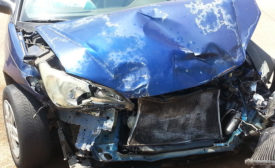News
Flight crew praised for handling of runway emergency
“Uudetectable” malfunction caused plane to slide off the runway into a fence
March 8, 2019
A FairWarning Story
Dubious record for highway safety agency in public information lawsuits
March 7, 2019
Never miss the latest news and trends driving the safety industry
eNewsletter | Website | eMagazine
JOIN TODAYCopyright ©2024. All Rights Reserved BNP Media.
Design, CMS, Hosting & Web Development :: ePublishing









